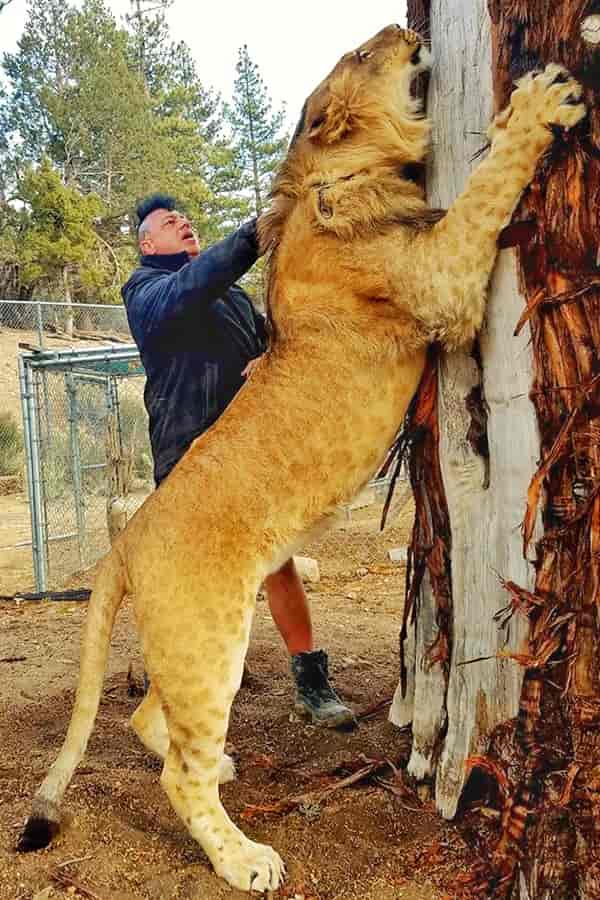Lions have Spotted Marks on their Fur
You will be astonished to learn that the lions do have spotted marks on their fur. You will be astonished because you can easily claim that you have only witnessed the lions with a plane fur (without spots) on their bodies which appears to be tawny brown in color. However; at certain phases of their lives, their plain and spotless fur does possess spotted marks all over it
Lions do have spotted marks on their fur, when they are the young cubs and youngsters. However; these spots disappear when they reach the age of maturity.
For example; when the lion cubs are born, they have spots all over their fur. Even the juvenile lions do have spotted fur for couple of years. Finally; when the lion grows up and become an adult, these spotted marks fade away from their bodies and their fur becomes plain and spotless in appearance.
Lions also Possess
Spotted Marks on their Fur
Spotted Marks on Lions
At Certain Phases of their Lives
Lions Cubs
Possess Spotted Marks
Juvenile Lions
Possess Spotted Marks
Mature & Adult Lions
No Spotted Marks on their Fur
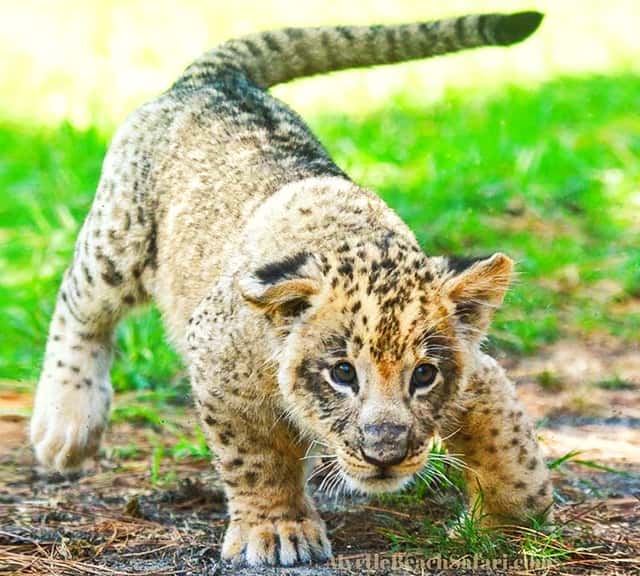
In the beginning as cubs, the color of these spotted marks on the fur of the lion cubs appear to be black. Lion cubs have the most dominant dark colored spotted marks on their fur. However; with the passage of time these dark colored spotted marks start getting dimmer and dimmer (becoming brown from black during the juvenile phase) in appearance.
At the time of birth the spotted marks on lion cubs appear to be black in color. However; later these marks get merged with their original fur color i.e., tawny brown. Usually the spotted marks last for 2 years in lions.
In the final phase as the mature lions or adults, these spotted marks gain the same color as the color of their fur. According to the observers; the spotted marks on the lions' fur last for almost 2 years and after that they disappear altogether when they become adults at the age of 4 years.
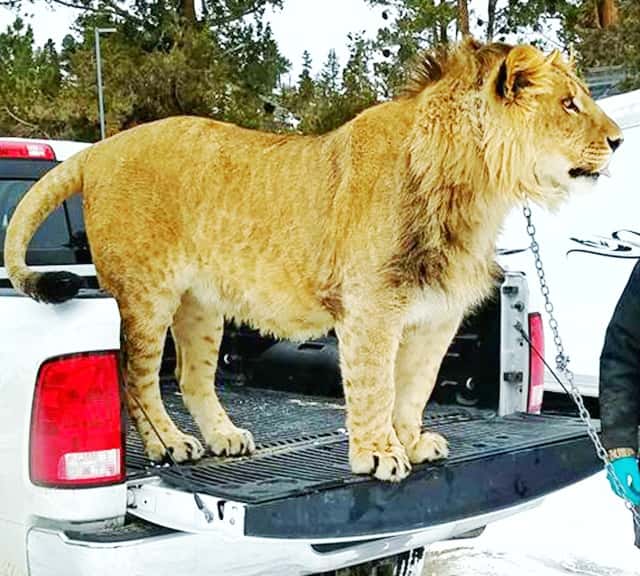
Lion Cubs Possess
Black Colored Spotted Marks
Juvenile Lions
Brown Colored Spotted Marks
After 2 Years Age of Lions
The Spotted Marks Disappear
Adult Lions (Male & Females)
No Spotted Marks
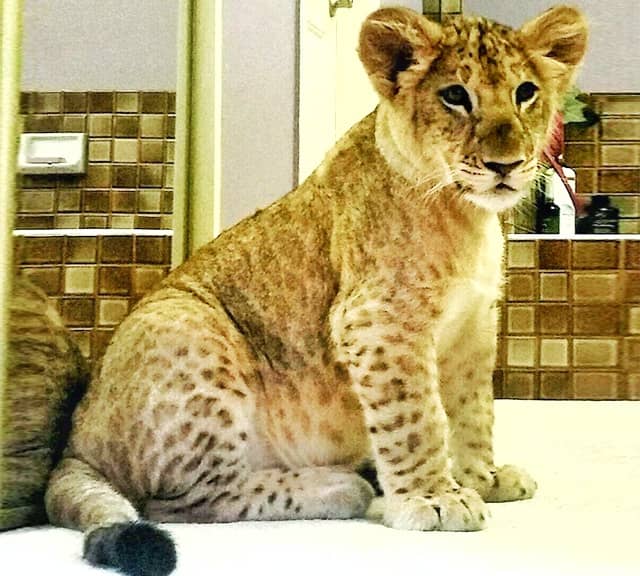
Even though this phenomenon of possessing spotted marks on their fur earlier in the life and later getting merged into the fur coloring is very rare within big cats but a few other big cats also possess this phenomenon. Apart from lion, another big cat which possesses spotted marks on its fur and later has these spotted marks merged into the plane fur is the Puma.
Apart from the lions, another big cat which possesses spotted marks on its fur at the time of birth and later have them disappeared when it gets mature is the Puma.
Puma cubs at the time of the birth have huge circular spots on their bodies (Probably the biggest spotted marks of all the big cat cubs). However; as they get older, their spotted marks get me merged into the plane fur. No one knows for certain that why it happens within lions and pumas but there are a lot of explanations which justify this phenomenon of spotted and spotless furs within their life-cycle.
Presence & Absense of Spotted Fur
Very Rare Phenomenon in the Lifecycle of Big Cats
Another Big Cat with Spotted Marks
Puma Cubs have spotted marks but later Disappear
No One Knows for Certain
About Presence & Absense of Spotted Marks within Big Cat Lifecycles
A lot of Explanations
Justify; the Presence & Absense of Spotted Marks
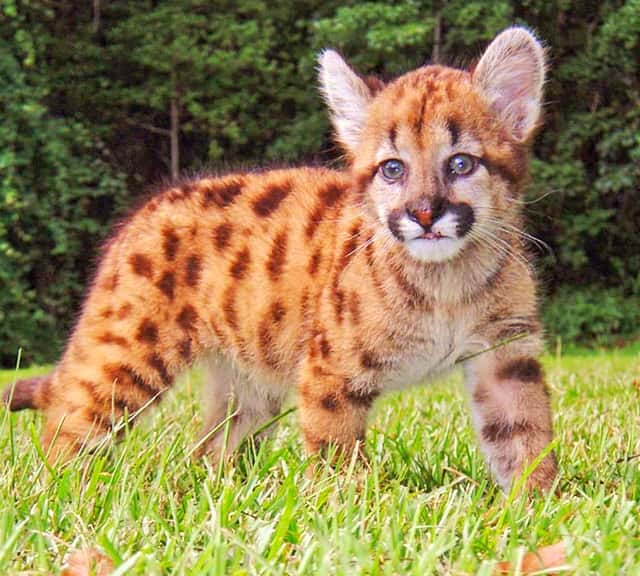
So far; the best explanation about the lion cubs having the spotted fur includes, the ability of the spotted fur to camouflage the lion cubs and keeping them stay hidden within the bushes and plantations. Lion cubs are very vulnerable, when they are young and very few of them survive till the age of maturity. They are constantly threatened by the Hyenas, who may eat anything when given an opportunity. Therefore; staying hidden when their mother is away is their best chance of survival while these spotted marks on their fur help them in this regard.
According to the big cat experts, the spotted marks on the fur of lion cubs and young lions help them to stay hidden from the predators. Furthermore; they appear as the dappled shadow which creates the perfect camouflage.
Furthermore; according to the observers, the spotted marks on the fur of the lion cubs appear like a dappled shade and it boosts the chances of getting ignored by the predators. When the lions grow up they may need a spotless tawny brown colored fur which matches the dry mud of the Savannah. This fur coloring helps them to gain the camouflage capability for hunting.
Spotted Marks on Lion Cubs
Offer Perfect Camouflage
Spotted Marks Help Lion Cubs
Stay Hidden within Bushes & Plantations
Spotted Marks on Lion Cubs
Appear like Dappled Shade
Lion Cubs are Threatened by
Hyenas and other Predators
Spotted Marks
Save the Lion Cubs from being Hunted and spotted
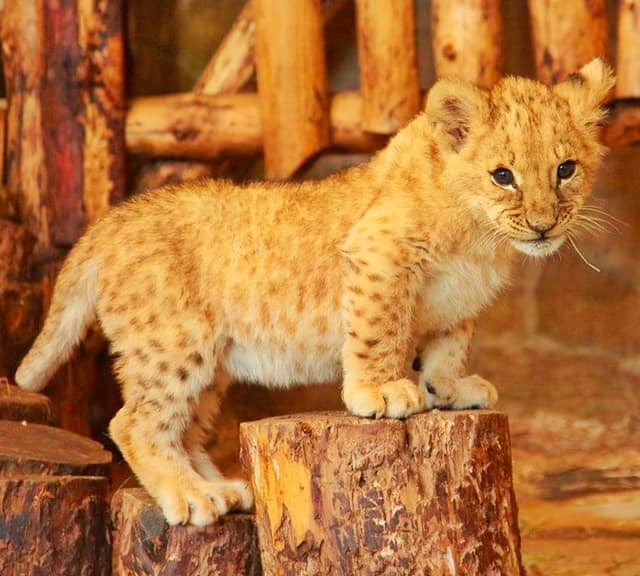
Just like most of the other big cats, these spotted marks on the fur of the lions also vary from one lion to another. This also means that each and every lion cub has its own pattern of spotted marks on its fur. This way the young lions can be differentiated from one another. However; what about when these spotted marks get disappear from their fur? The researchers have found a very scientific way to differentiate one lion from another and that is through their whisker spots.
Each lion has unique pattern of whisker spots which does not fade away with the passage of time and stays intact. These whisker spots do not vary and remain the same throughout their entire lives.
In lions the whisker spots are like the human fingerprints. They are always unique for each lion and every lion can be differentiated on the basis of these spots. However; most commonly the male lions are usually differentiated from one another on the basis of their mane which is also unique for each lion and other scar makings on their fur.
Each Lion Cub has
Unique Pattern of Spotted Marks
Lions are Scientifically Differentiated
Through Whisker Spots
Whisker Spots are Unique
For EAch and every Lion
Other Methods of Lion Identification
Through Mane or Scar Markings
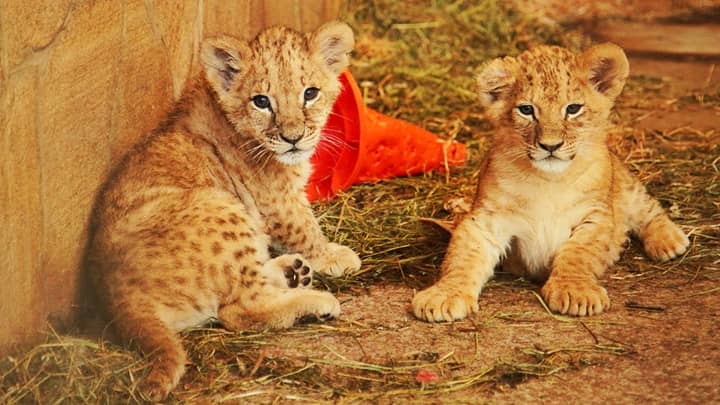
Lastly; this overall phenomenon for the lions to have spotted marks early on in their lives and later the merger of these spotted marks with the original fur color, shows the adaptability of the big cats. Lions have been ruling the African planes for thousands of years and with the passage of time their bodies have adopted accordingly.
The spotted fur for the lions early on in their bodies shows that how well the lions adapt to their environment, when it comes to the matter of their survival.
This also proves that the natural instinct also helps to evolve the physical features within the bodies. Having the spotted marks on their bodies early on in their lives is just the matter of survival; otherwise they could easily be spotted by the predators, which may stop at nothing to make them an easier meal.
Phenomenon of Presence & Absense of Spotted Marks
Shows Adoptability of the Lions
Spotted Marks Serve as
Survival for the Lions Early On!
